Do underground attractions fascinate you?
 This post and page contain affiliate links and I may earn compensation when you click on the links at no additional cost to you.
This post and page contain affiliate links and I may earn compensation when you click on the links at no additional cost to you.
While every country has its fair share of them, many tourists are completely unaware of these attractions that are often hidden away in plain sight.
Here are 9 cool underground attractions in Ireland that you may not have known about and how you can see them.

- Book the best tours and guides on Tripadvisor, Viator or GetYourGuide
- Get reliable travel insurance with Travel Insurance Master
- Get the best flight tickets with Aviasales
- Rent a comfortable car via Discovercars
- Find the best accommodation on Booking.com or Trivago
1. The Aillwee Cave Experience
The Aillwee Cave, which also houses a Birds of Prey Centre in County Clare, is a cave system that lies in the heart of the Burren, a Special Area of Conservation.
The caves, cut into the side of a mountain, consist of over a kilometer (0.62 miles) of passageways that also include an underground river and a waterfall, as well as large stalactites and stalagmites.
There is evidence that bears – now extinct in Ireland – made their home in these dark caverns of the earth.
Bear fossils have been found in the Ailwee Cave as well as in other caves around Ireland.
The cave was discovered in 1944 by a local farmer, whose dog happened to enter the cave while following a rabbit.
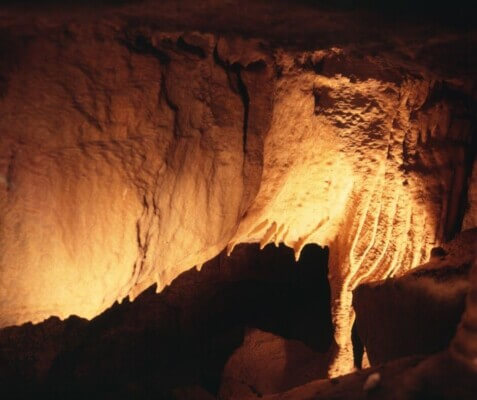
The farmer did not explore the cave. Nor did he tell anyone about it until 1973, when cavers in the area asked about it.
It was officially explored and opened up to visitors in 1976 when the bones of two brown bears were found there.
Today, the Ailwee Cave is considered Ireland’s premier show cave.
A 30-minute guided tour of the cave will allow you to see the cave in all its glory, including its beautiful waterfall.
Prices for the Ailwee Burren Experience, which includes a guided cave tour, a visit to the Birds of Prey Centre, a self-guided biodiversity walk and the opportunity to sample cheese and fudge in the farm shop, can be found on the website.
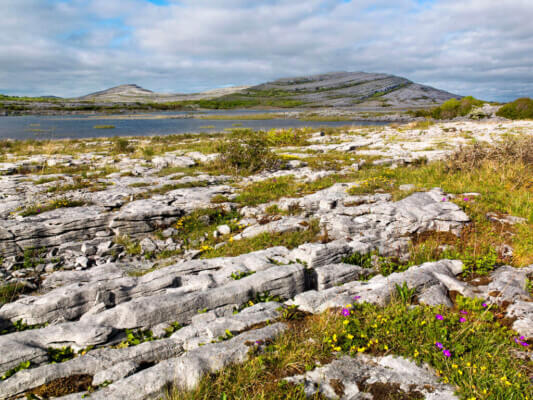
2. The Doolin Cave
The Doolin Cave, also located in the Burren, contains one of the world’s longest known free-hanging stalactites at a reported 7.3 meters (24 feet) in length.
The other two are located in caves in Mexico and in Lebanon.
The stalactite at Doolin Cave was formed from a single drop of water over the span of thousands of years.
It was first discovered in 1952 by members of an English caving club who were visiting the area.
In 2016, the cave was opened as a tourist attraction.
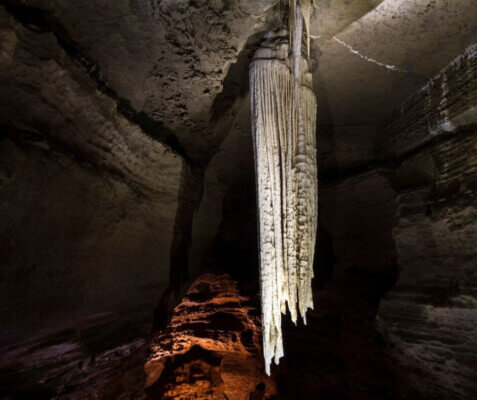
A nearby nature trail takes visitors to the original cave entrance. Along the way, you will see a variety of farm animals, including rare breeds of cattle, pygmy goats, and Jacob sheep.
You’ll also get magnificent views of the surrounding Doolin and Burren landscape, as well as the ruins of Ballinalacken Castle, a tower house built in the 15th or early 16th centuries.
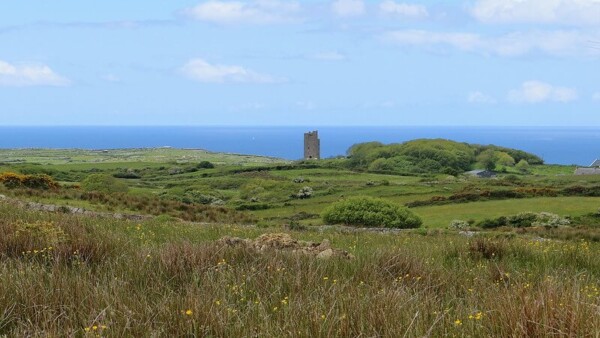
The caves are open daily from February through October from 10 a.m. to 6 p.m. and also from November through January from 10 a.m. to 4 p.m.
Admission is €17.50 for adults, €15 for seniors and students, and €8.50 for children. See information on opening/tour times on the Doolin Caves website.
Stay in a B&B in County Clare
3. The Marble Arch Caves
Considered one of Europe’s finest show caves, the Marble Arch Caves near Florencecourt consists of a series of natural limestone caves that were formed from three rivers draining off the nearby slopes of the Cuilcagh Mountain.
On a tour of the caves, you’ll not only see the amazing subterranean rivers, winding passages, and lofty chambers that are part of this 7-mile (11.5 km) cave system, you’ll also learn about the early explorers in 1895 who dared go into the darkness.
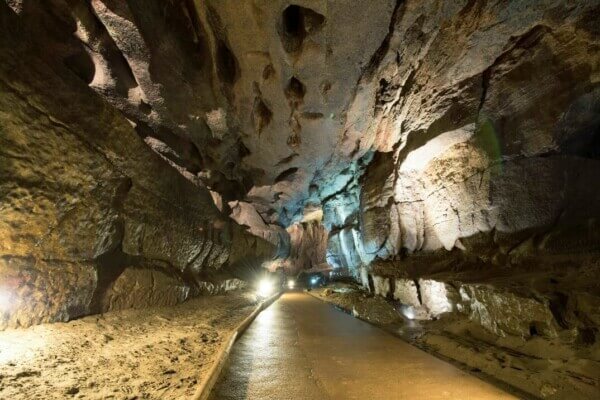
The caves are part of an amazing UNESCO global geopark that was formed millions of years ago and has resulted in a natural environment that is rich with valleys, lakes, and drumlins.
The uplands portion of the geopark includes a forest, blanket bog, and a karst landscape that formed the caves.
Sixty-minute guided tours of the caves are scheduled throughout the day.
Tours begin at the visitor center. Admission to the various tours at the Marble Arch Caves can be found here.
Be sure to arrive 30 minutes prior to the tour start time. They must be booked online beforehand.
4. Crag Cave
Crag Cave, located in County Kerry, is the 10th longest cave on the island of Ireland.
The existence of the ancient fossil cave system was known as far back as 1859 but it was not formally discovered by cave explorers until 1983.
The entire cave system, which includes a maze of carved tunnels and chambers, as well as stalactites and stalagmites runs under the town of Castleisland.
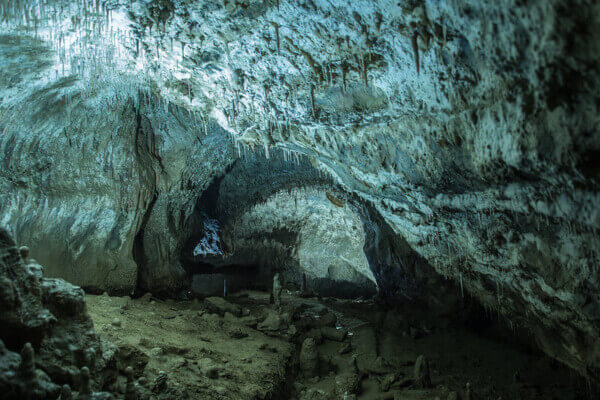
It was opened up as a show cave in the late 1980s by Donal and Margaret Geaney on whose land the cave was first discovered.
Guided tours last for about half an hour and include an exploration of the cave’s many chambers, including the Cathedral and the Crystal Gallery.
Self-guided tours are €15 for adults, €12 for seniors and students, and €6 for children ages 4-16. Family tickets range from €35 to €45.
By clicking on the Amazon link below, I may earn a small commission from the Amazon Associates Program. However, you will not incur any additional costs by doing so.
Many of its features are named after locations or characters from J.R.R. Tolkien’s novel, Middle Earth.
5. The Arigna Mining Experience
Quiet country roads, rolling pastures, and bogland are familiar scenes in Co. Roscommon, but did you know that there was once a thriving mining community there?
Accompany an ex-miner on a 45-minute tour in The Arigna Mining Experience, which will give you an insight into a miner’s life.
The tour also recounts 400 years of mining history in the area.
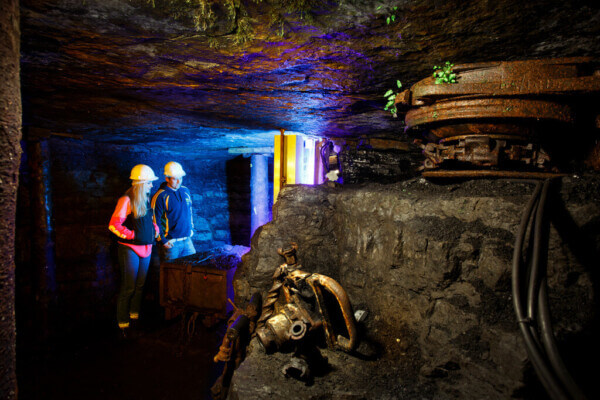
During the 19th and 20th centuries, the mine provided a much-needed income for local men, who would have otherwise emigrated to England or America.
Experience the dripping water, the intense darkness, and the cramped areas that the miners worked in, conditions that lasted well into the middle of the 20th century, and then come away amazed by the work that these hardy men endured under the most difficult of circumstances.
In addition to the mining tour, be sure to stop by the visitor center.
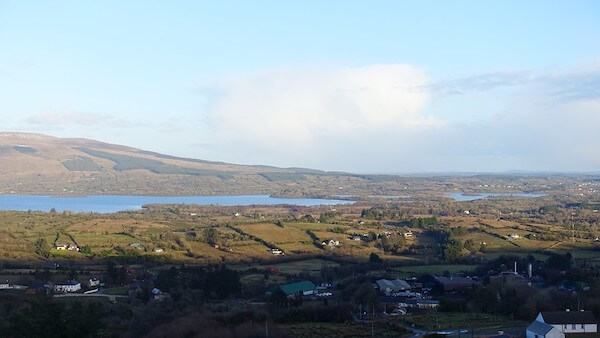
You’ll be equally impressed by the magnificent views of the area’s deep valleys and lakes, including Lough Allen and The Iron Mountain.
Tickets are €13 for adults, €11 for students (18+) and seniors, and €7 for children (5-18). Family rates are between €30 and €50. They must be booked online.
6. The Mitchelstown Caves Experience
These caves, while located in County Tipperary take their name not from the town of Mitchelstown in County Cork but from the owner of the old Kingston Estate, which was owned by Lord Kingsborough, who had his seat at Mitchelstown Castle.
The attraction, developed in 1972, is known as Ireland’s first show cave and is one of the largest and most complex in the country.
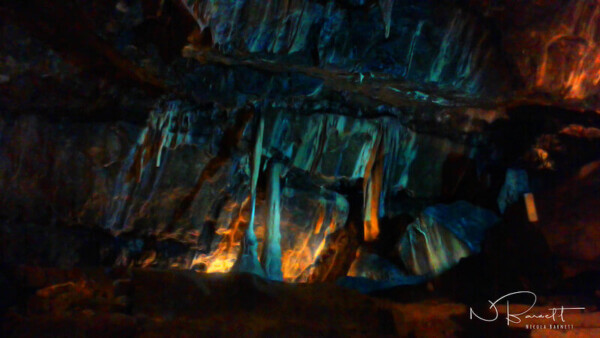
It was accidentally discovered by a local farmer in 1833 and was subsequently explored and mapped in 1834.
The subterranean world of the Mitchelstown Caves never fails to impress given their sheer scale and depth.
They are best known for having Europe’s finest underground columns called the “Tower of Babel,” which is 9 meters (29 feet) high.
On a guided tour, you’ll see massive caverns surrounded by stalactites, stalagmites, and other huge calcite pillars.
The largest cavern within the Mitchelstown Caves is called “Tir na nÓg” and is used to host musical events.
The views outside are equally impressive, with glimpses of the Cork and Tipperary countryside and the Galtee Mountain range, the highest in Ireland.
Admission to the caves is €10 for adults, €5 for children up to age 14, and €24 for a family of 4.
7. The Maghera Sea Caves
With over 20 caves, eight arches, and five tunnels, the Maghera Sea Caves in County Donegal are just waiting to be explored.
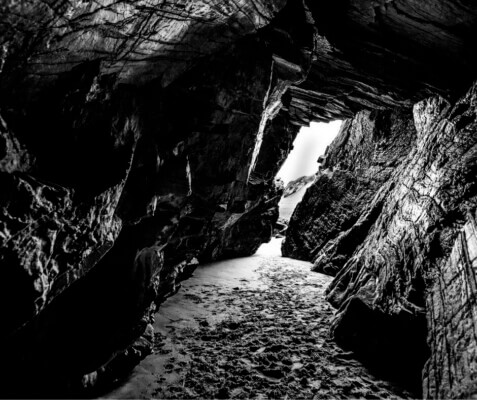
The best way to see them is during low tide on a kayak or other type of small craft.
There is much folklore associated with these caves, which are located about 1 kilometer (0.62 miles) from the popular Assaranca Waterfall.
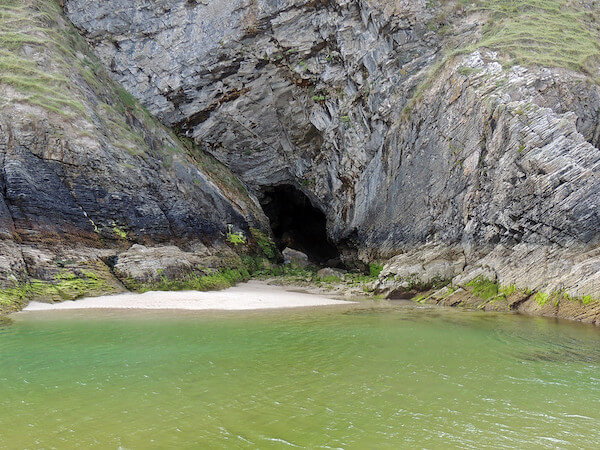
One story tells of a massacre involving Cromwellian soldiers who forced the local people to hide in the caves, while another tells the story of a single male survivor of the massacre who crawls into the dark cave with his dog seeking freedom but never makes it out alive.
The dog emerges hairless in Glencolumcille, many miles away.
The caves are a 5-minute drive past the chapel in the town of Ardara. Simply look for the sign for Maghera Beach.
Get Wifi Across Ireland with Wifi Candy – save 10% with code irelandonabudget
8. Bruce’s Cave
Located beneath the East Lighthouse on Rathlin Island off the coast of County Antrim, Bruce’s Cave has an equal amount of folklore associated with it.
The 60-meter-high (196 feet) cliffs that exist here are home to thousands of seabirds, making this a popular attraction.
The cave itself can only be accessed by boat and only when the waters are calm.
There are actually four caves in Ireland and Scotland that are known as “Bruce’s Cave.”
They are named after King Robert the Bruce, King of the Scots from 1306 to 1329, who sought to regain Scotland’s place as an independent country.
This cave on Rathlin Island is said to be the one where Robert the Bruce met the spider after being defeated at the Battle of Strathfillan.
The story goes that while waiting out the winter of 1306, Robert watched a spider on the cave wall trying to spin its web.
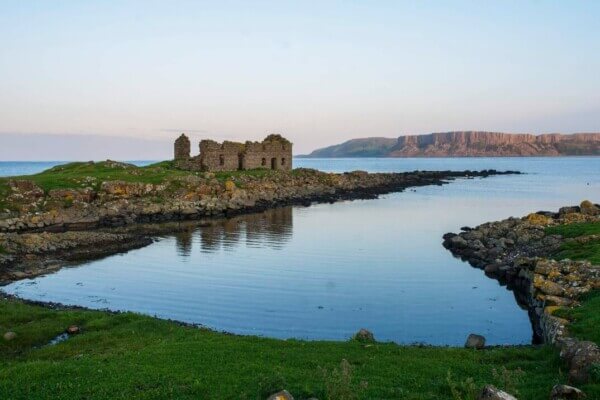
All fantastical legends aside, historians say that Bruce would have been familiar with the cave during his stay at Bruce Castle, more commonly known today as Rathlin Castle.
You can discover more about the cave and the history of the island by taking a walking tour with local tour guide Paul Quinn, or you can take the Bruce's Cave Experience with Abháinn Cruises.
You can get to Rathlin Island by ferry from Ballycastle in Co. Antrim.
9. St. Michan’s Mummies
A vault underneath St. Michan’s Church in Dublin, the foundation of which was built in 1095, is where you will find another one of Ireland’s underground treasures.
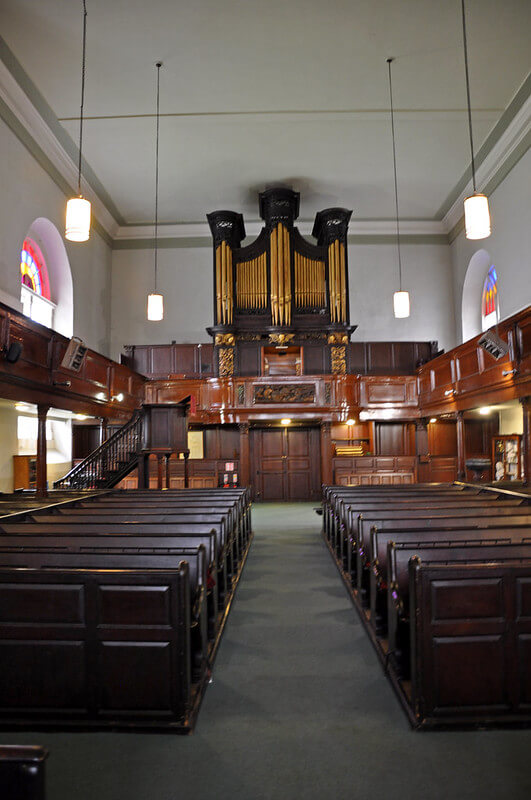
The church, which still has its original organ believed to have been used by Handel himself, is home to five crypts containing the mummified corpses of prominent Dubliners, many of them dating from the 17th through the 19th centuries.
While you’ll find some caskets in the small nooks of the basement walls, there are four prominent mummies that draw the most attention.
“The Crusader” is the most widely known of the mummies and is believed to be 800 years old.
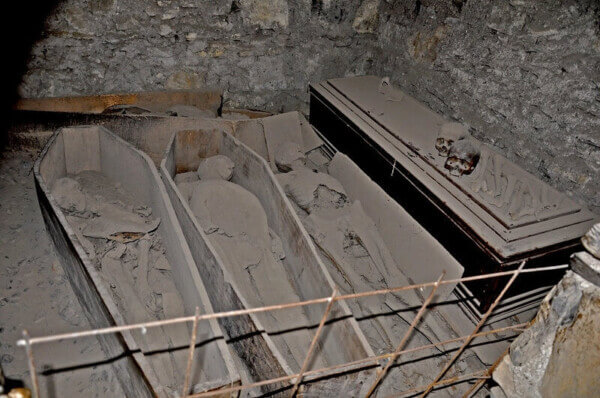
Researchers say this six-and-a-half-foot soldier fought in The Crusades and after he died, his legs were broken and tucked under his body so that he could fit into the small coffin.
The crypt also holds the coffins of the Sheare Brothers who were drawn and quartered by the British for their part in the Rising of 1798, in addition to several Earls of Kildare.
Apparently, it is also the site of the remains of Robert Emmet, the Irish rebel killed by the British in 1803.
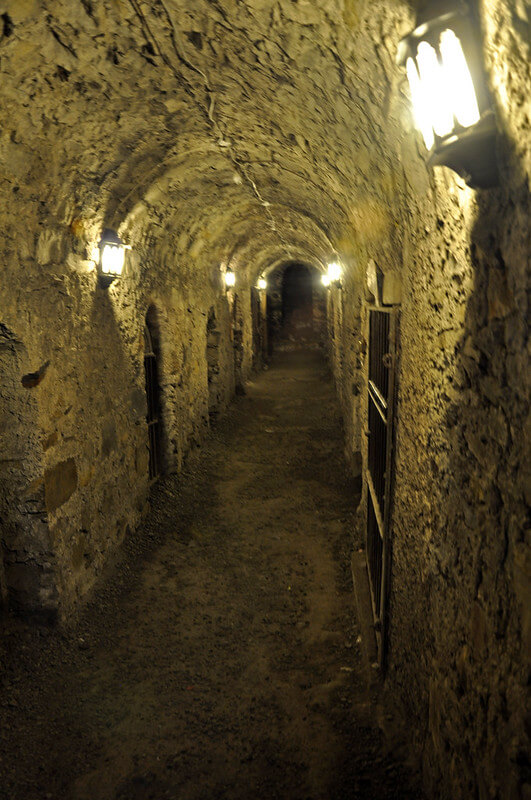
In February 2019, the crypt was broken into and desecrated.
The head of the Crusader was stolen but was later recovered. A nun’s body was also decapitated, and another mummy was turned over.
Some of the body parts have since been sent to the National Museum of Ireland for safekeeping because they sustained water damage.
It is best to call the church ahead of time to make sure that tours are being offered at this time. The phone number is +353-1-872-4154 or you can email [email protected].
Have you visited any of the above underground attractions on the island of Ireland? Let me know in the comments below.



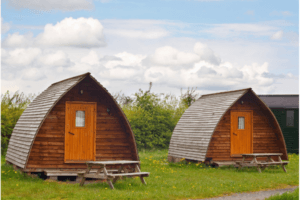

I’ve been absent for a while, but now I remember why I used to love this website. Thank you, I’ll try and check back more frequently. How frequently you update your website?
If I’m not too busy with other things, once a week. Trying to stick to that plan at least anyway. Thanks for the support!